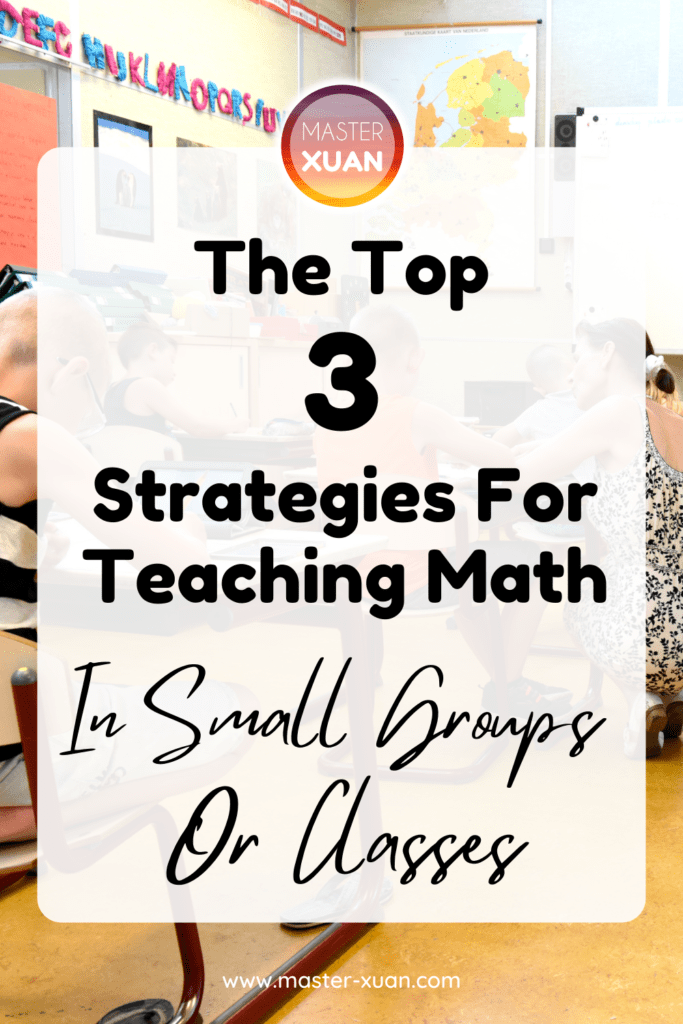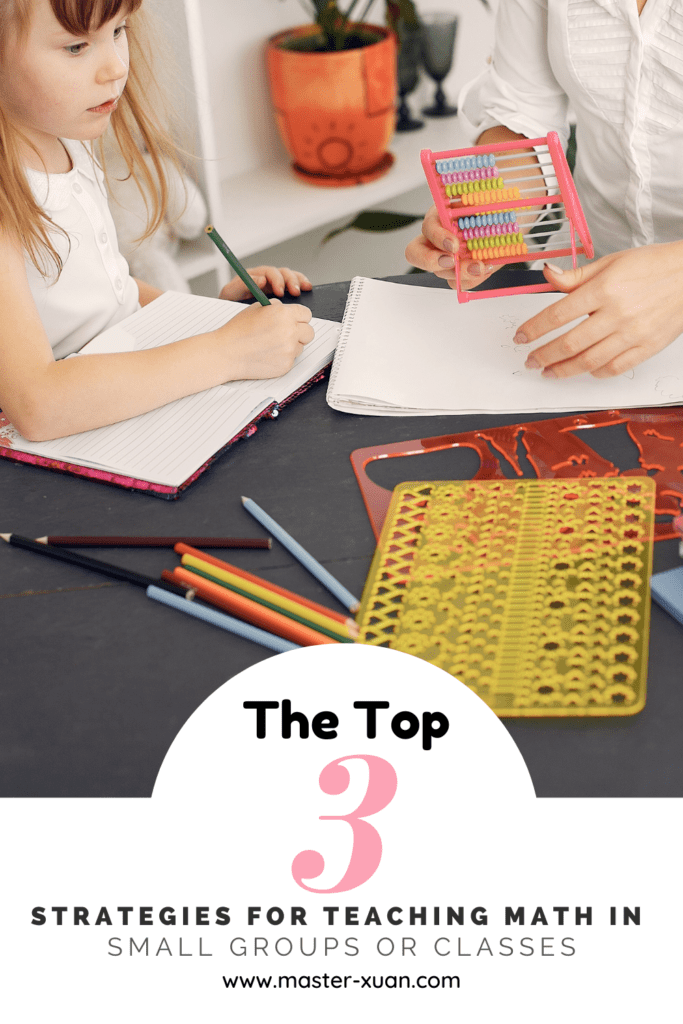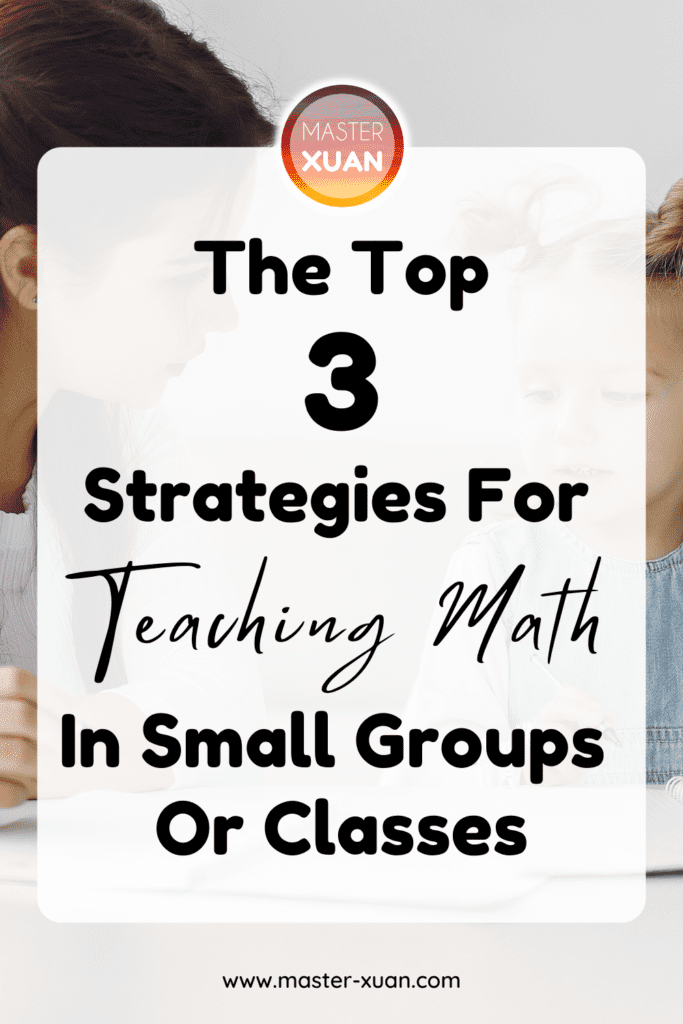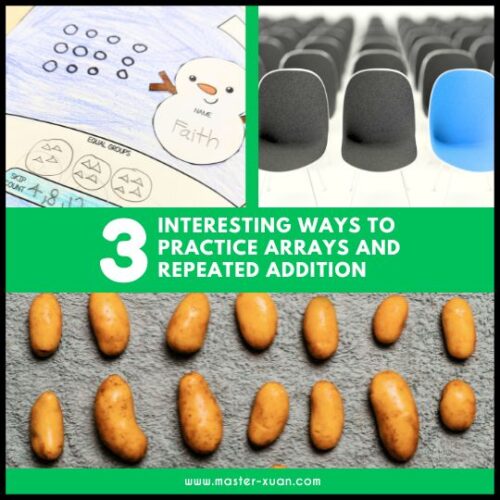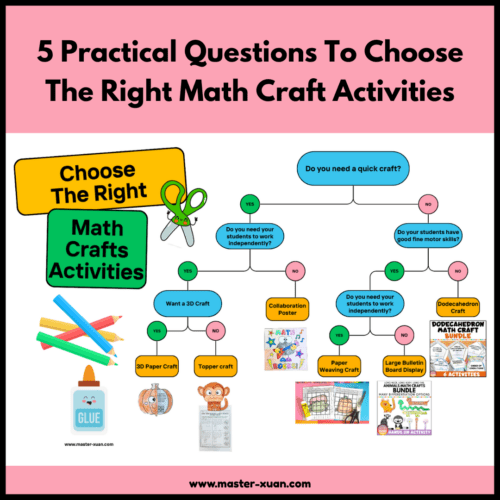If you are looking for some strategies for teaching math in small groups or classes, you come to the right place. Maybe you are just new to teaching students in a small class. Or just searching for some group tutoring strategies to improve your lesson. No matter what, these 3 simple strategies will be helpful to you!
(P.S. you can apply these small group tutoring techniques to other subjects too.)
Or if you want more strategies, grab the free 26 pages ebook “The Top 10 Strategies For Teaching Math In Small Groups Or Classes” below!
Definition
When I mentioned small groups I mean in my classroom there are only 2 to 6 students.
I understand that some teachers do teach small groups in the classroom, meaning focusing on a group of students while other students are doing something else.
Even though my definition of small groups may be different from yours, I believe you can also benefit from these methods.
You can also implement these strategies for your math centers, math stations, or intervention groups.
My Story
Here’s some background story of me. I’m a full-time tutor teaching primary math in a small group of 1 to 6. Students are aged 7 to 12. Most of the time I will try to allocate students of the same level together but often I will have to teach students of different grades and abilities together.
1) Preparation
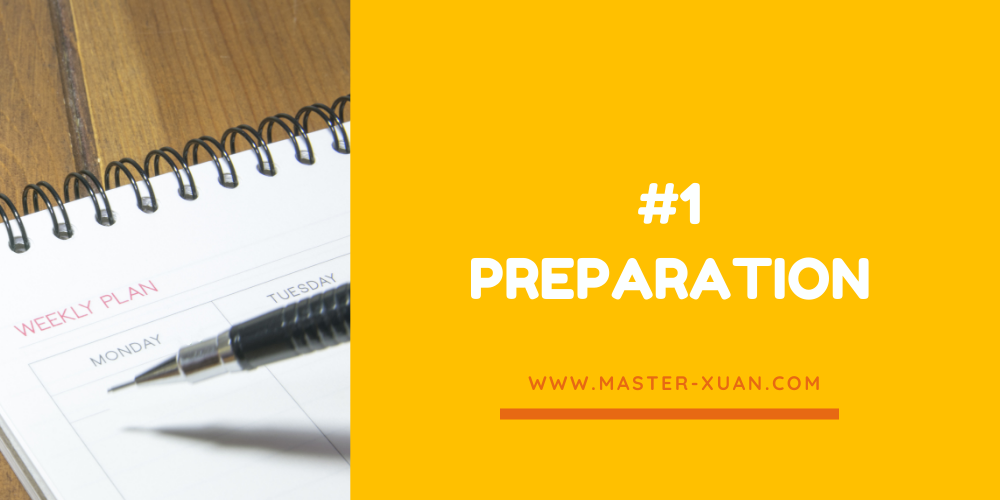
Prepare Mentally
Rehearse how you want your lesson to go in your mind. Do you want them to do the same thing or different things? Are you going to teach them the same topic?
If you are into manifestation or meditation, use them before lessons if you need the extra boost.
Prepare Physically
- Have you gone to the washroom?
- Drink some water?
- Have a bottle or cup full of water nearby?
Prepare Materials
If you know what you are doing with the students for that lesson, you can prepare the materials beforehand.
But I do understand that there will be cases where you don’t know what they need. For instance, new students or when students who are going to learn a new topic and you don’t know what will it be.
In this case, prepare review worksheets. It could be just a simple 1-page quiz on a previous topic. Or it could even be a quiz for a grade lower on the topic that you want to teach. You just need something short but long enough for you to have the time to get the materials ready for him or her.
(Psss…if you are looking for some math resources, do check out my TPT store or Boom store.)

Alternatively, I will just use materials I had already prepared for other students in another class. Because there is always time after class to prepare another set for another student.
I would always recommend preparing more materials so that students don’t have to wait for you while you print. Often I will like to batch the preparation of materials by printing out 1 to 2 weeks’ worth of materials.
I will also keep at hand some worksheets that early finishers can do. This way they will always have something to do.
2) Time Management

I’m basically conducting one-to-one lessons in a group setting. To maximize the time spent by students, I need to be efficient and use the time wisely.
I also like my students to use their time wisely. Hence, I often tell students to skip questions they really don’t know how to do and I’ll help them when it is their turn.
As a result, students will not waste time waiting for me, and I can have uninterrupted time with each student.
So here’s how I conduct my lessons in different cases.
How I Conduct Lessons With Different Grades In A Class
When students enter the classroom, I will remind them to hand in their homework (if they have it).
I will pass them the worksheets to be done (or it could be already on the table they usually sit). It could be worksheets that review concepts taught previously, worksheets with harder questions, and/or a worksheet of a new topic.
I will mark the homework as they do worksheets that I think they are capable of doing by themselves. Unless the student is sitting further away, usually I will just pass the worksheet immediately after I’m done marking. Students need to try and do their corrections by themselves first.
Most of the time I will start with the first person who gave me his/her homework. I will ask if any help was needed. If he/she asked for help, I will help. If not, I will just leave it to her/him to finish the corrections.
Then I will proceed on to the next student who is in close proximity.
I will leave the weakest student who has the most corrections to the last because I know I will need to spend a lot of time with him or her. After spending 10 to 15 minutes with the student, I will ask the room if anyone has any questions. If no one has any questions, I will continue teaching the weakest student.
On the other hand, if other students have questions, I will ask the weaker student to try out the other corrections while I help out with the next student.
How I Conduct Lessons With Same Grades In A Class
This also works if the majority of the class is of the same level.
If I know I’m going to teach a new topic, once everyone arrived, I will stop marking the homework. Instead, my priority will be teaching mini-lessons right in front of the class. Once I’m finished explaining the concepts and students are practicing, I will continue marking.
Take note that if you know you need to teach a concept or topic to a few students in that class, teach them as a whole. If there is only 1 student who isn’t able to catch up with the whole class, I will ask him or her to listen first. Then I will explain to him or her individually later on.
Similarly, If you have at least 2 students getting the same questions wrong, go through the questions on the board. For questions that only individual students got wrong, unless it is something that I want to emphasize, I usually will only go through them individually.
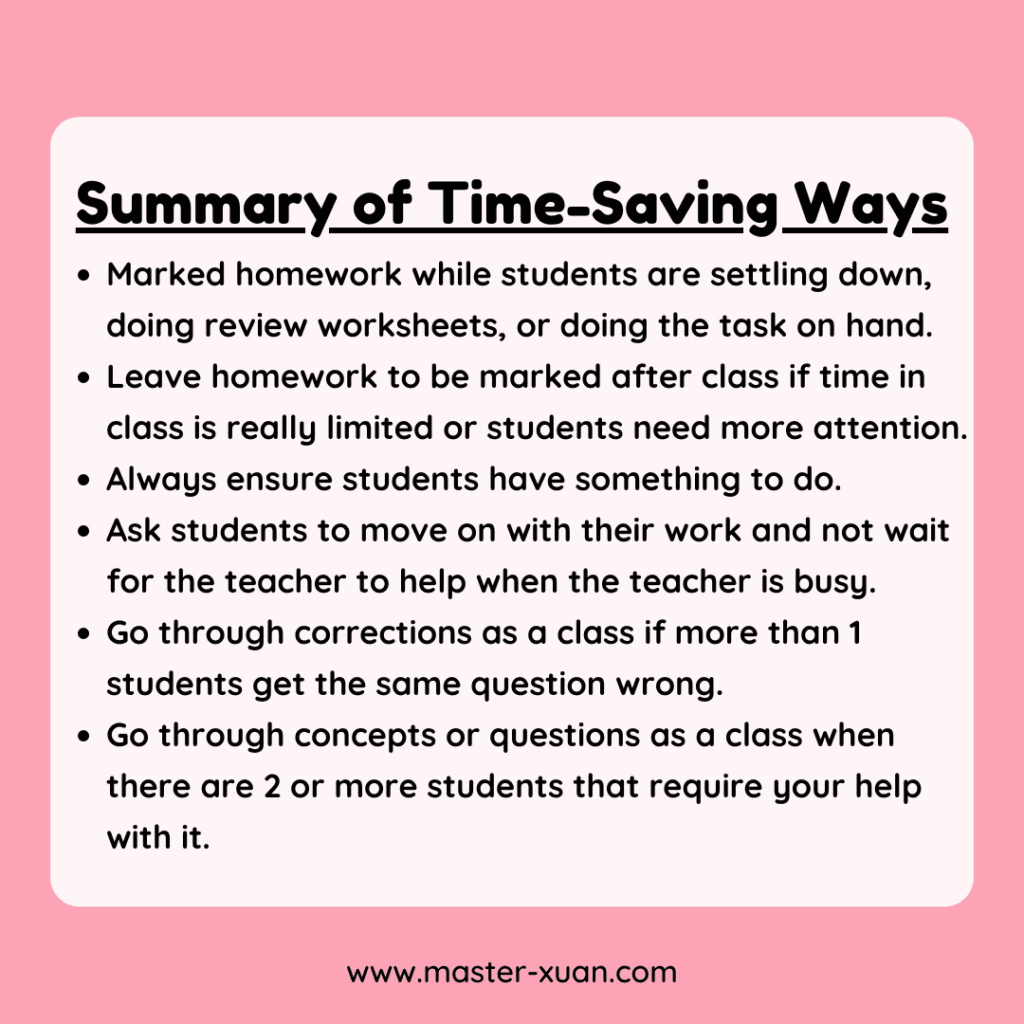
(Pss…using Boom decks can help to save time as it is no prep and self-grading. Related post: 3 Online Math Winter Activities Kids Actually Found Fun And Interesting)
3) Add Variety

It’s good to have routines for students to follow. But it is equally important to add interest to the lesson.
You don’t have to do any drastic changes to your lesson if it just wasn’t your style. It could just be a simple thing like changing a boring worksheet with an interesting worksheet. Or use the same worksheet but use it another way.
Get some ideas by reading this blog post: Free Printable Math Worksheets For 1st Graders Teacher Can Use In 3 Unique Ways and 3 Ways To Make Multiplication 3 Digits By 1 Digit Fun and Interesting.
If your students are of the same level, using math resources in groups can help engage students. This is because many students like to interact with their classmates. By using resources that can be used in pairs or groups, not only do they get to learn at the same time, they will be more proactive in their learning too!
However, the best is to find resources that are suitable for both individuals and in groups. For example, Quizzes On Fractions. This way you get more choices and more worth for your bucks.
Conclusion
The 3 strategies for teaching math are Preparation, Time Management, and Add Variety.
I hope you benefitted from my sharing.
I have collated some more strategies for teaching math and had written more detailed actionable steps you can take in this ebook.
If you are interested, drop your email and have it delivered right to your inbox today!
Here are some pins that you can save to bookmark this post: The Top 3 Strategies For Teaching Math In Small Groups Or Classes. Save them to your Pinterest Board now! ↓
